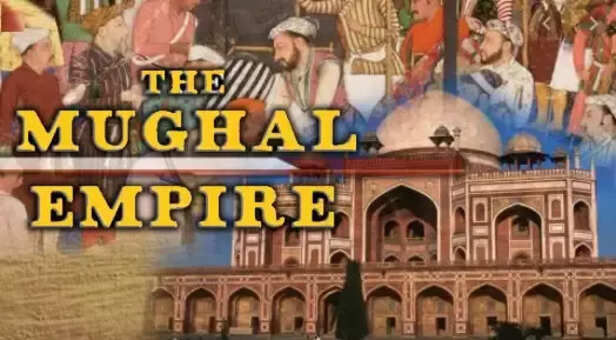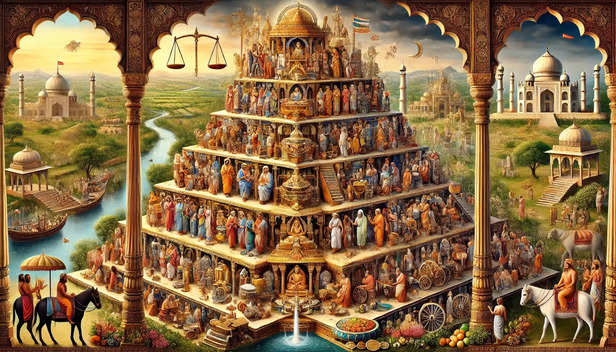What Really Happened When India’s Mughal Empire Fell to the British Crown
Nidhi | Jan 09, 2025, 23:03 IST
( Image credit : Timeslife )
India’s transition from the powerful Mughal Empire to British colonial rule was a game-changing moment in history. This article examines how the Mughal Empire fell, the British took control, and how this shift influenced India’s governance, culture, economy, and society. From the fall of the majestic Peacock Throne to the rise of the British Crown, discover the untold story of how power changed hands and reshaped India forever.
"Imagine a land where the sun once set on a gilded empire and rose on the flag of a foreign crown. This is the story of India’s transformation—from the grandeur of the Mughal Peacock Throne to the rigid dominion of the British Crown. It is a tale of how history’s currents swept away an era of splendor, replacing it with an era of colonial order, forever altering the subcontinent’s identity."The fall of the Mughal Empire and the rise of British rule in India is a narrative steeped in ambition, conflict, and cultural upheaval. From the decline of the last Mughal ruler, Bahadur Shah Zafar, to the eventual establishment of the British Raj, this transition reshaped India’s governance, economy, culture, and societal norms. Let’s explore the sweeping changes that unfolded during this pivotal chapter of history.




The journey from the Mughal Peacock Throne to the British Crown marked the end of an era defined by grandeur and the beginning of one dominated by colonial pragmatism. The Mughal legacy left behind architectural wonders, a rich cultural tapestry, and tales of majestic rule. The British introduced modern infrastructure, legal systems, and governance, but at the cost of economic exploitation, cultural erosion, and societal division.
This transformation profoundly altered India's trajectory, laying the foundation for its future struggle for independence and the eventual reclamation of its identity. Today, the echoes of this historical shift remind us of the resilience of a nation that has continuously reinvented itself through centuries of change.
Political and Administrative Transformation

Mughals
( Image credit : Timeslife )
- The Mughal Empire relied on a feudal structure, with regional governors (subedars) managing territories on behalf of the emperor.
- The British replaced this with a centralized bureaucracy, governed through the Indian Civil Services (ICS), creating a rigid administrative framework.
- The Mughal Empire relied on a feudal structure, with regional governors (subedars) managing territories on behalf of the emperor.
- The British replaced this with a centralized bureaucracy, governed through the Indian Civil Services (ICS), creating a rigid administrative framework.
- Mughal courts operated on Islamic law and local customs.
- The British introduced codified laws, modeled after English common law, replacing traditional justice systems and marginalizing local judicial practices.
- Mughal courts operated on Islamic law and local customs.
- The British introduced codified laws, modeled after English common law, replacing traditional justice systems and marginalizing local judicial practices.
- Under the Mughals, the zamindars collected revenue on behalf of the emperor.
- The British introduced systems like the Permanent Settlement, converting zamindars into landowners and peasants into tenants, leading to widespread exploitation and economic disparity.
- Under the Mughals, the zamindars collected revenue on behalf of the emperor.
- The British introduced systems like the Permanent Settlement, converting zamindars into landowners and peasants into tenants, leading to widespread exploitation and economic disparity.

Railway
( Image credit : Timeslife )
- The Mughals encouraged trade and handicrafts, making India a leading global economy.
- The British deindustrialized local industries, particularly textiles, turning India into a raw material supplier for Britain’s factories and a market for British goods.
- The Mughals encouraged trade and handicrafts, making India a leading global economy.
- The British deindustrialized local industries, particularly textiles, turning India into a raw material supplier for Britain’s factories and a market for British goods.
- Railways, telegraphs, and postal services were developed by the British, ostensibly for trade and governance but also to exploit resources and consolidate power.
- Ports and cities like Calcutta, Bombay, and Madras grew into colonial trade hubs, sidelining traditional Mughal centers like Agra and Delhi.
- Railways, telegraphs, and postal services were developed by the British, ostensibly for trade and governance but also to exploit resources and consolidate power.
- Ports and cities like Calcutta, Bombay, and Madras grew into colonial trade hubs, sidelining traditional Mughal centers like Agra and Delhi.
Cultural and Social Impact
- The Mughal era fostered cultural integration, blending Islamic and Hindu traditions in art, architecture, and governance.
- British policies of divide and rule highlighted religious and social divisions, intensifying Hindu-Muslim tensions.
- The Mughal era fostered cultural integration, blending Islamic and Hindu traditions in art, architecture, and governance.
- British policies of divide and rule highlighted religious and social divisions, intensifying Hindu-Muslim tensions.
- English education replaced Persian as the language of administration and learning.
- A new class of English-educated Indians emerged, bridging the gap between traditional society and Western ideals, but also fostering colonial alienation.
- English education replaced Persian as the language of administration and learning.
- A new class of English-educated Indians emerged, bridging the gap between traditional society and Western ideals, but also fostering colonial alienation.
- Missionary activities aimed to spread Christianity, creating resentment among Hindus and Muslims.
- Social reforms outlawing practices like Sati were introduced, which were often seen as interference in Indian traditions.
- Missionary activities aimed to spread Christianity, creating resentment among Hindus and Muslims.
- Social reforms outlawing practices like Sati were introduced, which were often seen as interference in Indian traditions.
Cultural Identity and Perception Shift

Taj Mahal
( Image credit : Timeslife )
- The Mughal Empire symbolized opulence, architectural grandeur (e.g., the Taj Mahal), and cultural synthesis.
- The British era introduced stark functionalism, focused on governance and economic control rather than cultural patronage.
- The Mughal Empire symbolized opulence, architectural grandeur (e.g., the Taj Mahal), and cultural synthesis.
- The British era introduced stark functionalism, focused on governance and economic control rather than cultural patronage.
- British narratives often dismissed Indian traditions as primitive, pushing Western ideals of modernity and progress.
- Indigenous art and craft suffered under colonial economic policies, while British tastes dominated urban culture.
- British narratives often dismissed Indian traditions as primitive, pushing Western ideals of modernity and progress.
- Indigenous art and craft suffered under colonial economic policies, while British tastes dominated urban culture.

Varna System
( Image credit : Timeslife )
- The British strategically exacerbated religious and caste divides, undermining the relative harmony of the Mughal period.
- This policy left a legacy of distrust and division, influencing the socio-political fabric of modern India.
- The British strategically exacerbated religious and caste divides, undermining the relative harmony of the Mughal period.
- This policy left a legacy of distrust and division, influencing the socio-political fabric of modern India.
- The exposure to Western education and colonial exploitation galvanized Indian thinkers like Raja Ram Mohan Roy and Swami Vivekananda to rethink India’s identity.
- The late 19th century saw the emergence of Indian nationalism, setting the stage for the struggle for independence.
- The exposure to Western education and colonial exploitation galvanized Indian thinkers like Raja Ram Mohan Roy and Swami Vivekananda to rethink India’s identity.
- The late 19th century saw the emergence of Indian nationalism, setting the stage for the struggle for independence.
Legacy of the Shift
This transformation profoundly altered India's trajectory, laying the foundation for its future struggle for independence and the eventual reclamation of its identity. Today, the echoes of this historical shift remind us of the resilience of a nation that has continuously reinvented itself through centuries of change.
